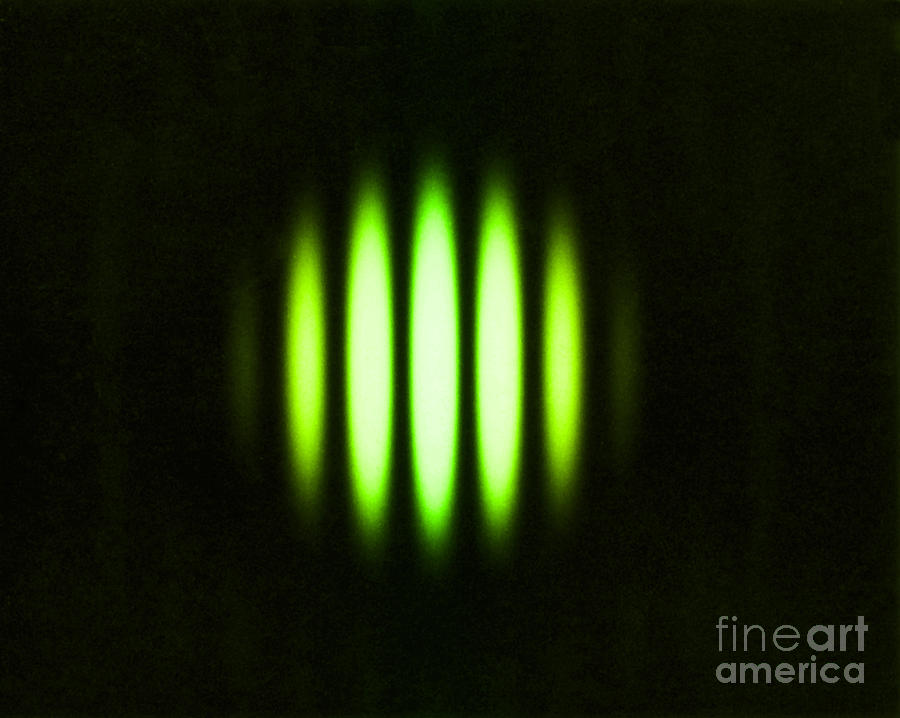We've looked at reflection and refraction.... so what other things do waves do? Well there are two important ones.
Interference:
We covered many of the ideas behind this before, in this post, but to recap: Remember how every wave is a moving oscillation in whatever medium it's moving through? When two waves meet, or pass through each other, they add together. So, at every point along the two waves where they meet, the amplitude is the amplitude of one wave plus the other wave.
That's nice and simple - just remember that where the wave drops below the X axis it has a negative sign - and a negative added to a positive actually subtracts from it. This means that we can get waves interfereing destructively (decreasing each other's amplitude) like this....
 |
| Above: Destructive interference. |
....or we can get waves interfering constructively (increasing each other's amplitude), like this....
 |
| Above: Constructive interference. |
When two waves are coherent (see this post for an explanation of coherence and phase), and have zero phase difference, they have the same sign along their whole length so you get the most increase in amplitude. When two waves are 180 degrees out of phase (so their peaks align with their troughs) you get the most reduction in amplitude.
Once we extend this idea to waves on a 2D surface, or a 3D volume, we will start to see more complicated patterns arising - and we'll look at that after the diffraction section below - but it all stems from these basic principles.
Diffraction:
The formal definition of diffraction is:
"The process by which a beam of light or other system of waves is spread out as a result of passing through a narrow aperture or across an edge."
This is a fairly counter intuitive property of waves, and a fairly important one. Imagine we've got an ocean wave passing through a small gap. If the gap is bigger than the length of the wave then the wave passes through fairly unaffected...
But if the gap is smaller than the wavelength than the waves doesn't pass through cleanly, it sploshes through....
... and on the far side of the barrier the 'splosh' acts like water falling straight down: It produces a new set of circular waves. The effect is called diffraction, and it actually happens in all types of waves. The 'how' of a light wave going 'splosh' is a bit complicated - in fact for non-ocean waves the 'splosh' is just a good metaphor, but the diffraction effect still happens anyway!
In fact the incoming waves don't need to 'splosh' very hard to produce this effect, they just need to have a wavelength that is big compared to the size of the gap they're trying to get through - so even a big gap can cause diffraction if the waves passing through are also big. The Open University has a nice demonstration that uses a water tank:
The smaller the gap is compared to the wavelength, the closer to a semicircle the diffracted waves get. But some diffraction happens even when the slit is very large, as shown below....
That's important to get, because it will help with the next part about diffraction: Diffraction can happen even when the 'slit' only has one edge. If we go back to ocean waves we can actually see how this isn't ridiculous - watch a few seconds of this video, showing storm waves hitting a section of sea wall:
See how the waves 'splosh' off the edge of the sea wall, creating circular patterns of backwash? Something similar happens to any wave hitting an object with an edge: The wave diffracts off the edge, now going in a different direction, and this lets the wave reach areas it couldn't get to just travelling in a straight line. And, just like all kinds of diffraction, longer wavelengths diffract more than shorter ones.
A good example is a person with two radios, one shortwave and one long wave, trying to send a signal to the other side of a very tall wall. The short wavelength radio waves only diffract slightly, and so cannot reach the receiver:
...But longer wavelengths diffract much more, and do reach the receiver....
...which is why you can usually get your favourite radio station, even when there're houses or even hills in the way.
Just before we move on, it's important to point out (because it's sometimes an exam question) that no property of a diffracted wave is changed by the process, other than it's direction.
The last thing we need to know, that makes diffraction very interesting (and ultimately leads to the weirdest area of physics, quantum mechanics), is that it only occurs with waves. That makes it a good test for whether or not something is a wave, and early scientists used an experiment that combined diffraction and interference to test whether light is wave. The experiment was set up like this:
....if you look at the white screen you can see that at certain points the light waves interfere constructively, and at others they'll interfere destructively - so on the screen, if light is a wave, we should see some areas that are dark, and some areas that are light. And, if you actually do the experiment, you'll see something like this:
That's definitely a pattern of light and dark, which the old times scientists took as proof that light is a wave.for a hit more on exactly how their ingenious experiment was done with their simple technology, check out the video below.










